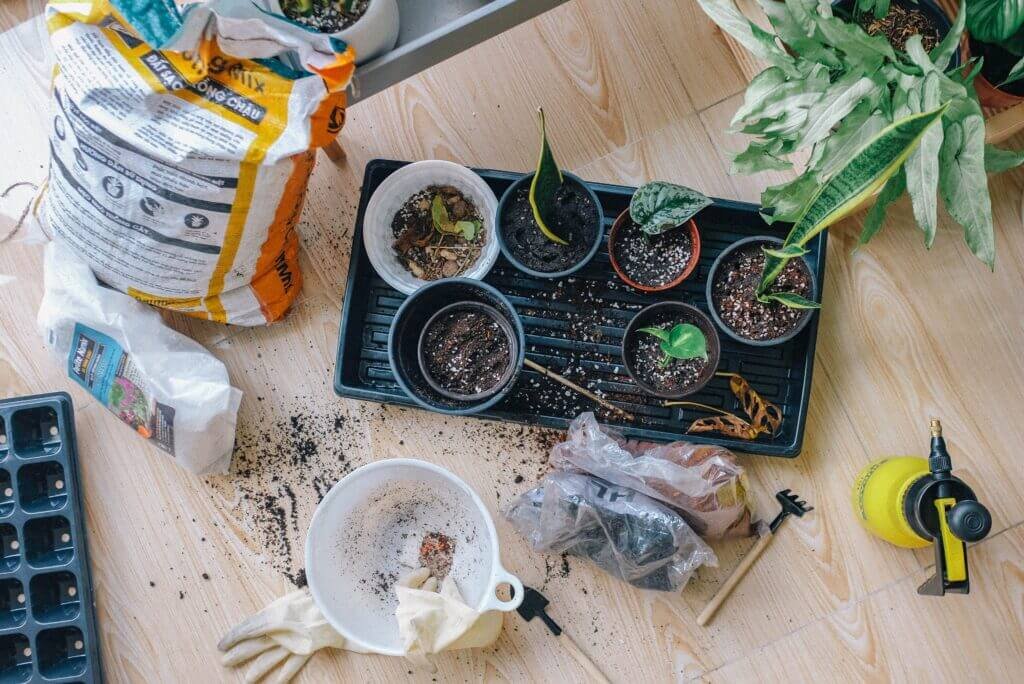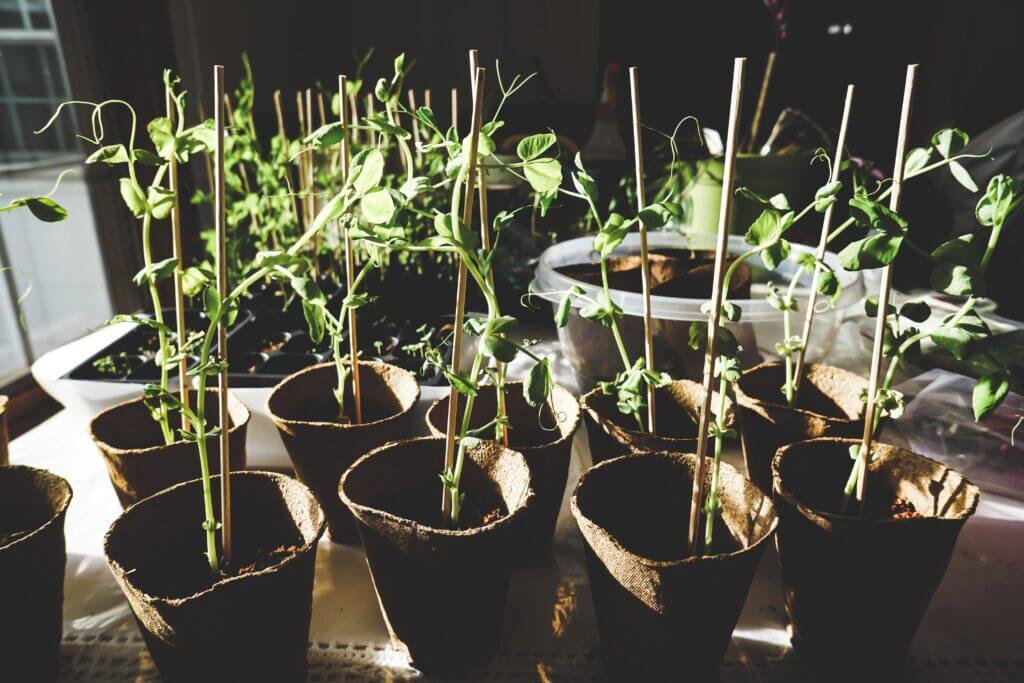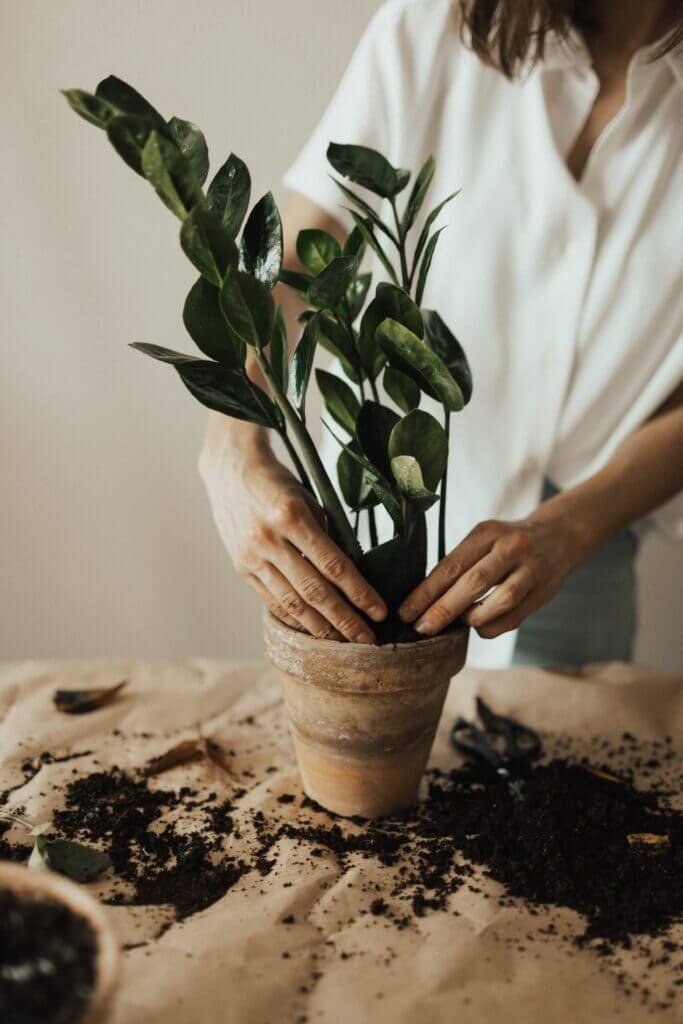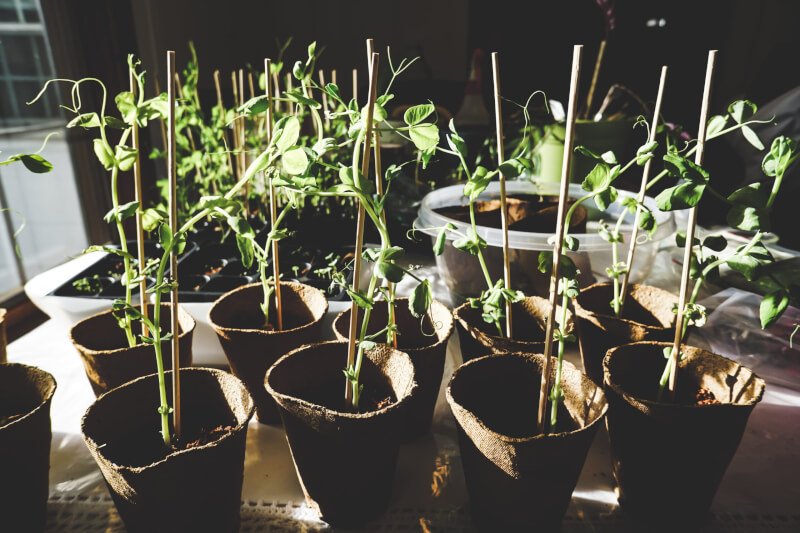Container gardening is a wonderful way to cultivate plants in small spaces and add greenery to your home or patio. Whether you’re a seasoned gardener or just starting out, it’s important to know the best practices for container gardening to ensure the health and vitality of your plants. In this article, we will explore some key tips and techniques that will help you create a thriving container garden that will impress both you and your neighbors. So, grab your gardening gloves and get ready to learn all about the best practices for container gardening! Container gardening is a great way to enjoy plants and flowers, even if you don’t have a traditional garden space. Whether you have a small balcony or a spacious patio, choosing the right containers is crucial to the success of your plants. Here are some important factors to consider when choosing the right containers for your garden.

Consider the Size
The size of the container is an important factor to consider when choosing the right one for your plants. Larger containers are generally better because they provide more space for the roots to grow and for water to be retained. Smaller containers, on the other hand, may restrict the growth of the plant and require more frequent watering. Before selecting containers, consider the size of the plants you wish to grow and choose containers that will accommodate their root systems comfortably.
Look for Drainage Holes
Good drainage is essential for container gardening success. When choosing containers, make sure they have proper drainage holes at the bottom. These holes allow excess water to escape, preventing waterlogged soil and root rot. If the container you love doesn’t have drainage holes, you can always create them yourself using a drill. Adequate drainage is important to maintain the health of your plants, so always check for drainage holes before purchasing or repurposing containers.
Consider Material and Durability
Container materials come in various types, such as plastic, clay, ceramic, and wood. Each material has its pros and cons, so it’s important to choose one that suits your gardening needs. Plastic containers are lightweight and easy to move around, while clay pots are durable and provide good insulation for the roots. Ceramic and wooden containers offer a more natural and aesthetically pleasing appeal. Consider the durability, weight, and insulation properties of the material to ensure the longevity and health of your plants.
Choose a Container with Handles
Handles are a practical feature to look for in a container. They make it easy to move the containers around, especially if you have limited space or need to protect your plants from extreme weather conditions. Handles also come in handy when you need to bring your containers indoors during cold winters or strong storms. So, when choosing containers, opt for ones with handles to make your gardening experience more convenient and enjoyable.
Selecting the right soil and fertilizers is crucial for the success of your container garden. Here are some tips to help you choose the right soil and fertilizers for your plants.
Use a High-Quality Potting Mix
Using a high-quality potting mix tailored for container gardening is essential. These mixes are specifically formulated to provide the right balance of air circulation, moisture retention, and nutrients that your plants need. Avoid using regular garden soil, as it may not provide adequate drainage and can compact in containers. Look for potting mixes that contain a blend of organic matter, like peat moss or coconut coir, perlite or vermiculite for aeration, and nutrients.
Consider Adding Compost or Organic Matter
Amending your potting mix with compost or organic matter is a great way to provide additional nutrients to your plants. Compost helps improve soil structure and fertility, ensuring that your plants have access to essential nutrients. You can either purchase compost or make your own using kitchen scraps and yard waste. Adding organic matter also helps retain moisture in the soil, reducing the need for frequent watering.
Choose Fertilizers Appropriately
Fertilizers play a vital role in ensuring your plants receive the necessary nutrients for growth and development. When selecting fertilizers for your container garden, consider the nutrient needs of your plants. Some plants may require more nitrogen for leafy growth, while others may need more phosphorus for flowering and fruiting. Read the labels carefully and choose fertilizers that match the specific needs of your plants.
Consider Slow-Release Fertilizers
Slow-release fertilizers are a convenient option for container gardening. These fertilizers gradually release nutrients over an extended period, providing a steady supply to your plants. Slow-release fertilizers come in different forms, including granules, spikes, or pellets. They are easy to use and reduce the risk of nutrient burn, which can occur when using traditional fertilizers. Incorporating slow-release fertilizers into your container gardening routine ensures that your plants receive a consistent supply of nutrients without the need for frequent applications.
Selecting the perfect plants for your container garden is essential to ensure their health and productivity. When choosing plants, keep the following factors in mind.
Consider Climate and Sunlight
The climate and sunlight availability in your area are important considerations when selecting plants for your container garden. Some plants thrive in full sun, while others prefer partial shade. Research the sunlight requirements of the plants you are interested in and assess the conditions of your garden space. Choose plants that are suitable for your climate and the amount of sunlight your containers receive throughout the day.
Choose Plants that Suit Containers
Not all plants thrive in containers, so it’s important to choose varieties that are well-suited for container gardening. Look for plants labeled as suitable for container growing or compact varieties bred specifically for container gardening. These plants often have smaller root systems, making them ideal for containers with limited space. Additionally, consider plants with bushy or trailing growth habits that will fill out the container and provide a visually appealing display.
Think About Plant Size and Growth Habit
When choosing plants for your containers, think about their mature size and growth habit. Some plants, such as certain varieties of tomatoes or peppers, can become quite large and require larger containers. On the other hand, compact herbs or flowering plants like petunias are well-suited for smaller containers. Ensure that the size and growth habit of the plants you choose are compatible with the containers you have available.
Consider Companion Planting
Companion planting involves growing different plants together that benefit each other. Consider planting compatible plants in the same container to maximize the use of space and promote healthy growth. For example, pairing plants that repel pests with plants that attract beneficial insects can create a natural pest control system. Similarly, pairing plants with different root structures can help optimize nutrient uptake and utilization. Do some research on companion planting and consider incorporating it into your container gardening plans.
Providing optimal watering is crucial for the health and success of your container garden. Follow these tips to ensure your plants receive adequate water without the risk of over or under watering.

Water Regularly and Consistently
Consistent watering is essential for container gardening success. During hot summer months, plants may require watering once or even twice a day, while in cooler periods, watering once every few days may be sufficient. Develop a watering schedule based on your plant’s needs and stick to it. Regular watering helps maintain moisture levels in the soil, preventing stress and promoting healthy growth.
Avoid Overwatering
Overwatering is a common mistake among container gardeners. It can lead to root rot, wilting, and other plant health issues. To avoid overwatering, make sure that your containers have proper drainage, as mentioned earlier. Avoid letting water accumulate in saucers or trays beneath the containers, as this can drown the roots. It’s better to underwater slightly and check the moisture level consistently rather than keeping the soil excessively wet.
Check Soil Moisture Levels
Checking the moisture level of the soil is crucial to prevent under or overwatering your plants. Stick your finger about an inch into the soil, and if it feels dry at that depth, it’s time to water. If it feels moist, postpone watering for another day. Investing in a moisture meter can also help you accurately monitor soil moisture levels and water your plants accordingly.
Consider Using Self-Watering Systems
Self-watering systems can help simplify the watering process and ensure your plants receive consistent moisture. These systems typically consist of a water reservoir that provides a continuous supply of water to the plant’s roots. They can prevent overwatering by only providing water as needed and can be especially beneficial during vacations or periods of absent-mindedness. Explore different self-watering systems available on the market and choose one that suits your needs.
Ensuring proper drainage is essential to prevent waterlogged roots and promote the health of your container garden. Implement the following practices to ensure adequate drainage in your containers.
Use Potting Mixes with Good Drainage
Choosing the right potting mix is key to maintain good drainage in your containers. Look for potting mixes that have a good ratio of organic matter and coarse materials like perlite or vermiculite. These coarse materials improve aeration and water drainage. Avoid using heavy garden soils or soils containing clay, as they may become compacted and impede drainage.
Create Drainage Holes if Necessary
If your containers don’t have drainage holes, it’s essential to create them to allow excess water to escape. Use a drill with a bit of the appropriate size for the material of your container and carefully create several drainage holes at the bottom. Creating drainage holes is a simple and effective way to ensure proper drainage and prevent waterlogging.
Consider Using Pot Feet or Risers
Raising your containers off the ground using pot feet or risers is a practical solution to promote good drainage. Elevating your containers allows excess water to flow freely from the drainage holes, reducing the chances of them becoming blocked or waterlogged. Pot feet or risers are available in various materials and styles, adding an aesthetic touch to your container garden while helping maintain proper drainage.
Avoid Water-Trapping Saucers
While saucers or trays are useful for catching excess water to protect your surfaces, it’s important to avoid using water-trapping saucers. Containers sitting in water-filled saucers prevent proper drainage and can lead to root rot. Instead, use saucers or trays with drainage holes or empty them shortly after watering to prevent water buildup.
Placing your containers appropriately is essential to ensure your plants receive the optimal growing conditions. Consider the following factors when deciding where to position your containers.
Consider Sunlight Requirements
When determining the placement of your containers, consider the sunlight requirements of your plants. Some plants, like tomatoes and peppers, require full sun to thrive, while others, such as ferns or certain herbs, prefer partial shade. Observe the sunlight patterns in your garden space and position your containers accordingly to ensure your plants receive the appropriate amount of light.
Avoid Extremes of Temperature and Wind
Extreme temperatures and strong winds can stress your plants and affect their growth. Avoid placing your containers in areas that are prone to extreme heat, such as next to reflective surfaces or metal structures that can intensify sunlight. Similarly, protect your containers from strong winds that can dry out the soil and damage the foliage. Position your containers in areas with a more moderate temperature range and sheltered from strong winds.
Think About Accessibility and Aesthetics
Consider the accessibility and aesthetics of your container garden when determining its placement. Position your containers in areas that are easily accessible, allowing you to water, prune, and care for your plants without any inconvenience. Additionally, consider the visual appeal of your container garden. Arrange your containers in pleasing groupings or add height variations for an attractive display. Remember to rotate your containers periodically to promote even growth and prevent plants from leaning towards the light source.
Rotate Containers Periodically
Rotating your containers periodically is important to ensure even growth and prevent one side of the plant from receiving more light than the other. As the plants grow, they may lean towards the light source, causing uneven growth patterns. By rotating your containers every few weeks, you encourage balanced growth and ensure that all sides of the plant receive adequate light.
Providing adequate nutrients is crucial for the health and productivity of your container garden. Follow these tips to ensure your plants receive the nutrients they need.

Regularly Feed Your Plants
Regularly feeding your plants with fertilizers is essential, as container gardening can deplete nutrients more quickly. Follow the fertilization guidelines provided by the specific plants you are growing and feed them accordingly. Applying fertilizer every four to six weeks during the growing season is recommended for most plants. Adjust the fertilization frequency based on the needs and growth rate of your specific plants.
Consider Organic Fertilizers
Organic fertilizers are a great option for container gardening, as they provide slow-release nutrients and improve soil health. Compost, worm castings, or well-rotted manure are excellent organic options that enrich the soil and supply essential nutrients to your plants. Incorporating organic fertilizers into your container gardening routine can promote long-term soil fertility and enhance plant health.
Use Liquid Fertilizers for Quick Absorption
Liquid fertilizers are a quick and effective way to provide an immediate nutrient boost to your plants. They are readily absorbed by the roots and can help correct nutrient deficiencies quickly. Liquid fertilizers come in various formulations, such as water-soluble powders or concentrates, and can be applied during regular watering. Follow the instructions on the fertilizer label to ensure proper dilution and application rates.
Watch for Nutrient Deficiencies
Monitor your plants regularly for signs of nutrient deficiencies. Yellowing leaves, stunted growth, or lack of flowering/fruiting can indicate that your plants are not receiving adequate nutrients. Conduct a soil test or consult a local gardening expert to identify specific nutrient deficiencies and make appropriate adjustments to your fertilization routine. It’s important to address nutrient deficiencies promptly to prevent further decline in plant health.
Regular pruning and maintenance are essential tasks in container gardening. Follow these practices to keep your plants healthy, productive, and pest-free.
Remove Dead or Dying Foliage
Regularly removing dead or dying foliage from your container plants is essential for their overall health and appearance. Dead foliage not only looks unsightly but can also attract pests and diseases. Use clean gardening shears or pruners to trim away any dead or yellowing leaves, stems, or flowers. This practice promotes fresh growth and prevents any potential disease or pest infestations.
Prune to Control Growth and Shape
Pruning is an important aspect of maintaining healthy and well-shaped container plants. Depending on the type of plant, pruning can involve removing overgrown or damaged branches, shaping the overall structure, or promoting bushier growth. Pruning also helps improve air circulation and sunlight penetration, reducing the risk of fungal diseases. Take the time to learn about the specific pruning techniques for your plants and incorporate pruning into your regular container gardening routine.
Check for Pests and Diseases
Regular inspection for pests and diseases is crucial for early detection and effective management. Monitor your plants for any signs of pest infestations, such as chewed leaves, webbing, or discolored foliage. Also, keep an eye out for signs of diseases like leaf spots, powdery mildew, or wilting. Act promptly if you notice any issues, as early intervention increases the chances of successful pest control or disease management.
Regularly Inspect and Weed Containers
Regularly inspecting your containers is essential to identify any potential issues or changes in plant health. Look for waterlogged soil, signs of nutrient deficiencies, or root-bound plants. Additionally, monitor for weeds that may sprout in your containers. Weeds compete with your plants for nutrients and water, so it’s important to remove them as soon as they appear. Regular inspection and weed removal ensure that your container garden remains healthy and thriving.
Monitoring and adjusting moisture levels is crucial for the health and success of your container garden. Follow these practices to ensure your plants receive the right amount of water.
Be Aware of Evaporation and Weather Conditions
The rate of evaporation and weather conditions can influence the moisture needs of your container plants. Hot, dry, or windy weather can cause water to evaporate more quickly, increasing the need for frequent watering. Monitor weather forecasts and be aware of environmental conditions to adjust your watering schedule accordingly. Understanding the impact of weather on your plants’ water needs helps prevent under or overwatering.
Check Soil Moisture Regularly
Regularly checking the moisture level of the soil is crucial to avoid over or under watering your plants. The finger test described earlier is a simple and effective way to check soil moisture. Remember that different plants have different moisture requirements, so assess the moisture level of each container individually. Developing a habit of checking soil moisture regularly helps ensure that your plants receive the appropriate amount of water.
Adjust Watering Based on Plant Needs
Every plant has unique water requirements, and it’s important to adjust your watering schedule accordingly. Some plants prefer consistently moist soil, while others prefer to dry out slightly between waterings. Research the specific water needs of your plants and tailor your watering routine accordingly. By providing the right amount of water based on each plant’s needs, you help maintain optimum soil moisture levels and promote the health of your container garden.
Use Mulch to Retain Moisture
Mulching your containers is a beneficial practice that helps retain moisture in the soil and reduce weed growth. Organic mulches, such as straw, wood chips, or leaf mold, create a protective layer on the soil surface, preventing evaporation and regulating soil temperature. Apply a layer of mulch around the base of your plants, ensuring that it doesn’t touch the stems. Mulching not only conserves moisture but also adds a decorative touch to your container garden.
Protecting your containers from extreme weather conditions is crucial to prevent damage to your plants. Follow these practices to safeguard your plants from harsh elements.
Prepare for Frost and Cold
If you live in an area with frost or cold temperatures, it’s important to protect your containers from freezing. Move your containers to a sheltered location, such as a garage or shed, during periods of extreme cold. Alternatively, wrap bubble wrap or insulating material around the containers to provide additional protection. Consider using frost blankets or garden fabric to cover your containers overnight to shield them from freezing temperatures.
Provide Shade in Hot Summers
During hot summer months, intense sunlight can scorch your container plants. If your plants are sensitive to direct sunlight or if temperatures soar, it’s essential to provide them with some shade. Move your containers to a shaded area, or use shade cloth to filter the sunlight reaching your plants. Shielding your containers from excessive heat and sunlight helps prevent heat stress and keeps your plants healthy.
Protect Containers from Strong Winds
Strong winds can cause damage to containers by toppling them over or exposing the plants to excessive movement. Position your containers in sheltered areas or use windbreaks, such as fences or trellises, to provide a barrier against strong winds. Additionally, consider using heavy pots or adding weight to the containers to stabilize them. By protecting your containers from strong winds, you prevent damage to your plants and maintain the overall health of your container garden.
Consider Moving Containers Indoors
In extreme weather conditions, such as heavy storms or heatwaves, it may be necessary to move your containers indoors temporarily. Locate a suitable indoor area with enough light and space to accommodate your plants. Ensure that the indoor space provides the necessary temperature and humidity conditions for the specific plants you are growing. Moving containers indoors during extreme weather events helps protect your plants from damage and allows them to thrive despite the challenging conditions.
Container gardening can be a rewarding and enjoyable experience with the right practices in place. By choosing the right containers, soil, and plants, providing optimal watering and drainage, placing containers appropriately, supplying adequate nutrients, and regularly maintaining and monitoring your plants, you can create a thriving container garden. Remember to tailor your practices to the specific needs of your plants and to enjoy the process of nurturing and watching your container garden flourish.


